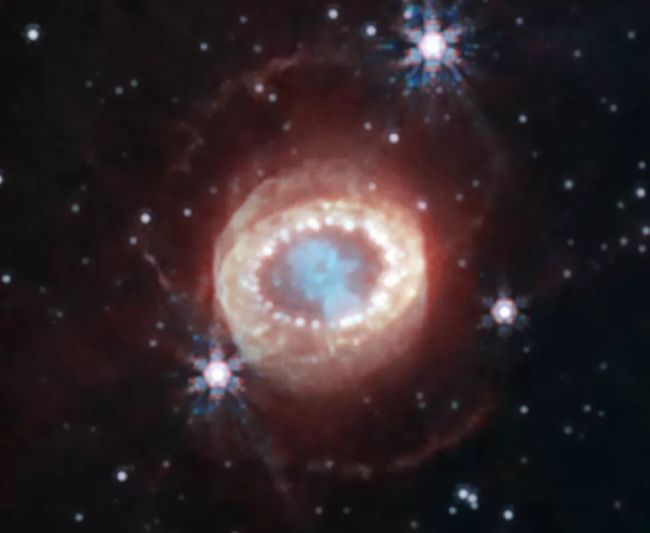A shot of a supernova AKA an exploding star has been captured by NASA through the new James Webb super telescope.
The star is believed to have exploded in 1987, but until now we have not been able to see it in all its glorious detail. Astronomers are fascinated by this because it shows what happens when big enough stars meet their unfortunate end.
Although this is the closest observed supernova to Earth, you don’t have to worry about debris flying your way. The star, which has the catchy name SN1987A, is 170,000 light years away from our home.
It seems that a supernova is not a super sudden event. As scientists noted, the part of the image that looks like a pearl necklace is probably material that was ejected about 20,000 years before the big boom occurred.
“We are able to see new hotspots emerging outside the ring that was previously illuminated,” explains Dr. Roger Wesson of Cardiff University, UK. “Furthermore, we see emission of molecular hydrogen in the ring that was not necessarily expected and something that only JWST could have revealed with its superior sensitivity and resolution.”
Once again, space manages to be both beautiful and terrifying at the same time.
Thank you, BBC.


 Renault’s compact family SUV will be called the Symbioz -.
Renault’s compact family SUV will be called the Symbioz -. Peugeot and its new range of salt and pepper mills -.
Peugeot and its new range of salt and pepper mills -. A new Uber Eats ad is being criticized for showing a peanut allergy -.
A new Uber Eats ad is being criticized for showing a peanut allergy -. Pagani announces new track-based hypercar, known as the Huayra R Evo -.
Pagani announces new track-based hypercar, known as the Huayra R Evo -. Introducing the Oscars in the Best Casting category -.
Introducing the Oscars in the Best Casting category -.